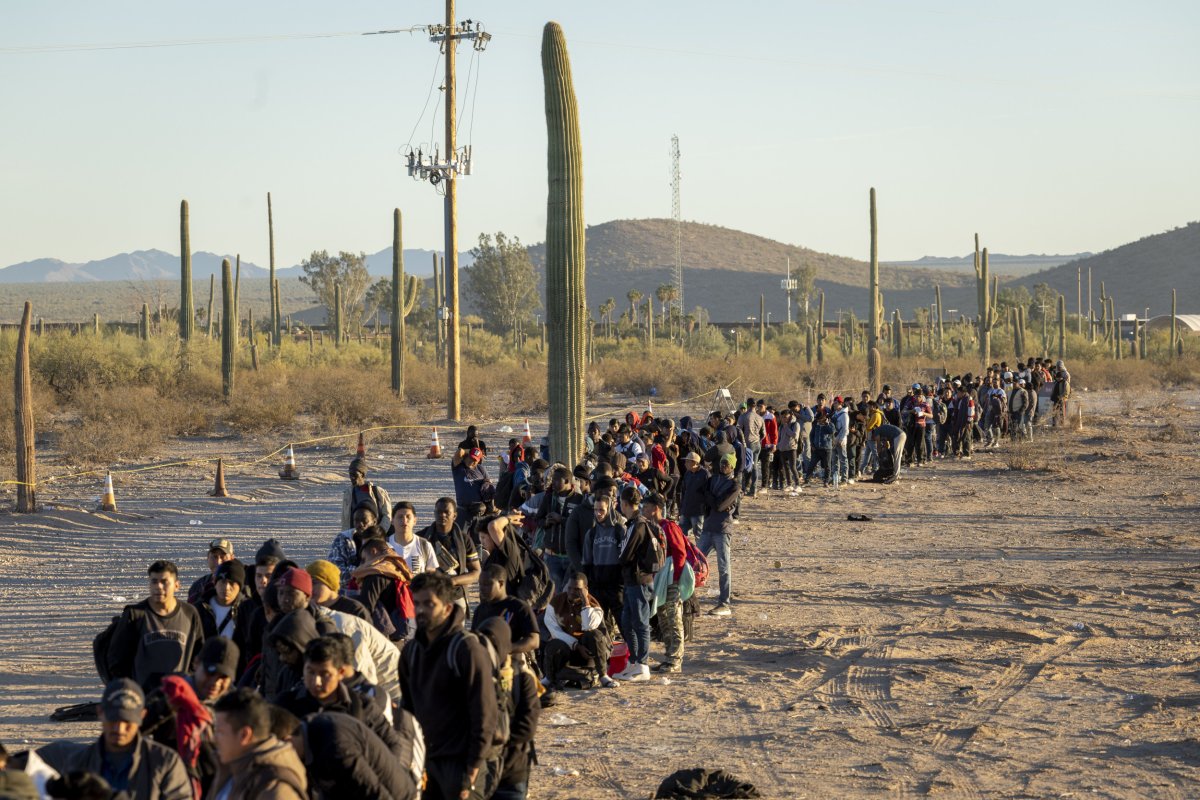California and Texas remained the leading states for undocumented immigrant populations in 2022, accounting for 42 percent of the 10.99 million U.S. total, a Newsweek map shows.
California had 2.6 million unauthorized immigrants, Texas 2.1 million.
Newsweek contacted the Governors' offices of California and Texas for comment via email outside normal office hours.
Why It Matters
President-elect Donald Trump has vowed to conduct the biggest mass deportation operation in US history as part of his immigration agenda, and these two states could potentially witness the most conflict during such a program.
What To Know
The next largest populations were in Florida, New Jersey, Illinois, and New York, with 590,000, 490,000, 420,000, and 410,000 unauthorized immigrants, respectively. The 10 leading states combined represented 72 percent of the total unauthorized immigrant population.
Newsweek's map showing the top 10 states where undocumented immigrants are living draws on data from the United States Department of Homeland Security (DHS).
Other states in the top 10 included North Carolina (360,000), Georgia (340,000), Washington (340,000), and Arizona (290,000). These states showed varying trends, with some experiencing small increases while others saw minor declines.
From 2018 to 2022, significant population changes occurred across these states. Texas saw an increase of 110,000 unauthorized immigrants, while Florida and New York experienced declines of nearly 100,000 and 200,000, respectively. California's population remained relatively stable, with only a slight dip in 2020 before rising again in 2022.
The overall unauthorized immigrant population in the United States saw a slight increase from 10.51 million in 2020 to 10.99 million in 2022, indicating a growing trend in migration patterns over the past few years.
Despite fluctuations in individual states, California and Texas continue to dominate as the primary destinations for undocumented immigrants in the U.S., with large portions of the population residing in these two states.

As the nation's immigration system remains a focal point for lawmakers, these statistics highlight the significant regional disparities in the unauthorized immigrant population across the country.
As the numbers evolve, the implications for immigration policy and state-level resource allocation will remain a key issue in discussions on immigration reform and border security.
The findings shed light on key migration trends and offer a snapshot of the regions most impacted by illegal immigration, providing valuable context for ongoing debates over immigration policy and enforcement.
What People Are Saying
Julia Gelatt, the associate director of the U.S. Immigration Policy Program at the Migration Policy Institute, told Newsweek: "Immigration is good for the United States because it keeps our population, labor force, and local communities growing and brings diversity of thoughts and perspectives. It also allows families to reunite and for employers to find the workers they need."
Texas Land Commissioner Dawn Buckingham told Newsweek: "The Texas General Land Office is ready to assist President-elect Donald Trump and Border Czar Tom Homan with their plans to deport violent criminal illegal immigrants from our country. My office remains committed to offering state-owned land deemed necessary to the incoming Trump Administration for the purpose of securing our southern border.
What Happens Next
Immigrant populations could be set to fall as Trump looks to enact his flagship mass deportation policy. Trump is set to be inaugurated on January 20 and, with control of the presidency, Senate, and House, he and the GOP may encounter little resistance in pushing forward their immigration agenda.
Across the aisle, Democratic lawmakers and advocacy groups are preparing for the incoming seismic changes to immigration policy.




















 English (US) ·
English (US) ·